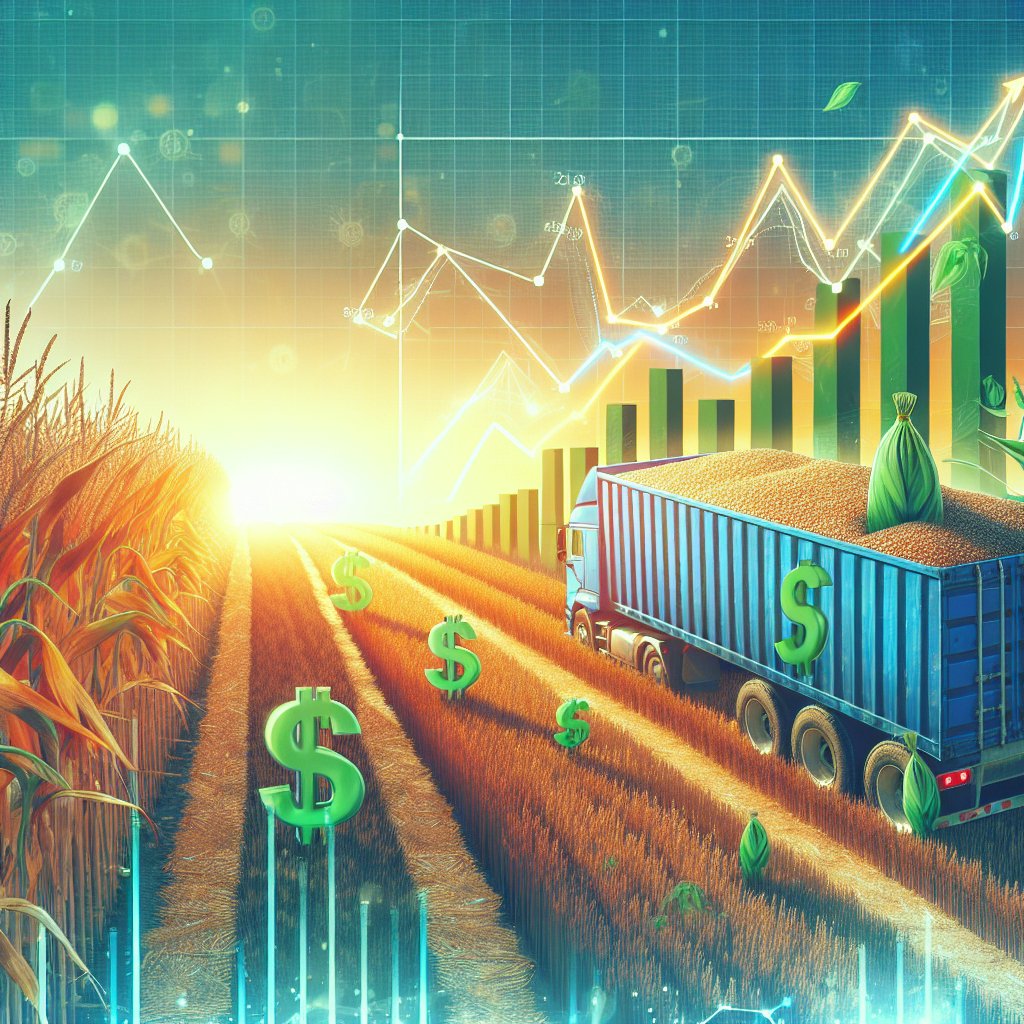The COVID-19 pandemic has had a profound impact on various sectors of the global economy, and agriculture is no exception. The fluctuations in commodity prices during this period have raised questions about the resilience of agricultural markets and the factors influencing price dynamics. Understanding how the pandemic has affected the prices of agricultural products is crucial for farmers, policymakers, and consumers alike. This article delves into the various aspects of this issue, exploring the causes and consequences of price changes in agricultural commodities during the pandemic.
Impact of Supply Chain Disruptions
One of the most immediate effects of the pandemic on agricultural commodity prices was the disruption of supply chains. Lockdowns and restrictions imposed to curb the spread of the virus led to significant challenges in the transportation and distribution of agricultural products. Farmers faced difficulties in getting their goods to market, resulting in a backlog of produce that could not be sold. This situation was particularly evident in perishable goods, such as fruits and vegetables, which had a limited shelf life.
As transportation routes were disrupted, the cost of logistics increased, further straining the supply chain. Many farmers were forced to reduce their production levels due to the uncertainty surrounding market access. This reduction in supply, coupled with the inability to transport goods efficiently, led to a spike in prices for certain commodities. For instance, the prices of grains and cereals saw fluctuations as farmers struggled to meet demand while facing logistical challenges.
Labor Shortages and Production Challenges
The pandemic also resulted in labor shortages, which significantly impacted agricultural production. Many agricultural workers were unable to travel to farms due to travel restrictions or health concerns. This shortage of labor led to delays in planting and harvesting, further exacerbating supply issues. In some regions, farmers reported that they could not find enough workers to tend to their crops, leading to reduced yields and, consequently, higher prices for consumers.
Additionally, the implementation of health and safety protocols on farms increased operational costs. Farmers had to invest in personal protective equipment (PPE) and implement social distancing measures, which added to their financial burdens. These increased costs were often passed on to consumers, contributing to rising prices for agricultural products.
Changes in Consumer Demand
The pandemic also brought about significant changes in consumer behavior, which in turn affected agricultural commodity prices. With lockdowns in place, many consumers shifted their purchasing habits, leading to increased demand for certain products while decreasing demand for others. For example, there was a surge in demand for staple foods, such as rice and pasta, as consumers stockpiled essential items. This increased demand put upward pressure on prices for these commodities.
Conversely, the demand for products that relied heavily on food service sectors, such as restaurants and catering services, plummeted. This decline in demand led to a surplus of certain agricultural products, causing prices to drop. Farmers who primarily supplied the food service industry faced significant financial challenges as they struggled to adapt to the changing market conditions.
Global Trade Dynamics
The pandemic also had implications for global trade in agricultural commodities. Export restrictions imposed by some countries to secure domestic food supplies led to increased volatility in international markets. Countries that relied heavily on imports faced challenges in securing necessary food supplies, leading to price increases for certain commodities. For instance, countries in the Middle East and North Africa experienced significant price hikes for wheat and other staple grains due to supply chain disruptions and export restrictions from major producing countries.
Moreover, the pandemic highlighted the vulnerabilities of global agricultural supply chains. As countries began to reassess their reliance on imports, there was a growing interest in local food production. This shift in focus could have long-term implications for agricultural markets, potentially leading to changes in pricing structures as local production increases and global trade dynamics evolve.
Government Interventions and Support Measures
In response to the challenges posed by the pandemic, many governments implemented support measures to stabilize agricultural markets. These interventions aimed to provide financial assistance to farmers, ensure food security, and mitigate the impact of price fluctuations. Programs such as direct payments, subsidies, and low-interest loans were introduced to help farmers cope with the economic fallout of the pandemic.
In some cases, governments also facilitated the distribution of surplus agricultural products to food banks and vulnerable populations, addressing both food waste and food insecurity. These initiatives not only helped stabilize prices but also ensured that essential food supplies reached those in need during a time of crisis.
Long-term Implications for Agricultural Pricing
The pandemic has underscored the importance of resilience in agricultural markets. As farmers and policymakers reflect on the lessons learned during this period, there is a growing recognition of the need for more robust supply chains and diversified production systems. The volatility experienced during the pandemic may lead to a reevaluation of pricing strategies and market structures in the agricultural sector.
Furthermore, the increased focus on sustainability and local food production could reshape consumer preferences and demand patterns in the long run. As consumers become more aware of the vulnerabilities in global supply chains, there may be a shift towards supporting local farmers and sustainable practices, which could influence pricing dynamics in the agricultural sector.
Conclusion
The COVID-19 pandemic has had a significant impact on agricultural commodity prices, driven by supply chain disruptions, labor shortages, changes in consumer demand, and global trade dynamics. While the immediate effects were characterized by volatility and uncertainty, the long-term implications may lead to a reevaluation of agricultural practices and market structures. As the world continues to navigate the challenges posed by the pandemic, understanding these dynamics will be crucial for building a more resilient agricultural sector that can withstand future shocks.




